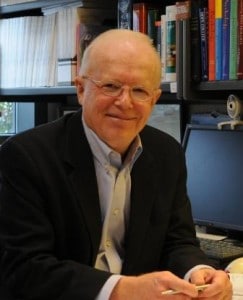LOS ANGELES, CALIFORNIA — Cisplatin is one of the most effective chemotherapy agents, used in just under half of pediatric cancer cases. Permanent hearing loss is a common side effect of this medication, but until now, studies have been too small and too varied to accurately characterize this risk.
Last week in The Lancet Child & Adolescent Health, investigators at Children’s Hospital Los Angeles published results of the largest study of cisplatin-induced hearing loss to date. The study establishes the first benchmarks for the prevalence of hearing loss, and reveals that the risk of hearing loss is affected not only by how much drug is given, but by how that drug is delivered—dosing schedules, complementary treatments, and more. These findings will allow oncologists to deliver more information to patients, and to plan treatment schedules to minimize this side effect.
The large number of variables involved means that permanent hearing loss can occur in anywhere from 20-90% of cisplatin-treated patients. This variable range is due to the fact that circumstances differ for many patients (their age, cancer type and other factors). But the new study reveals that another important aspect of chemotherapy can impact a child’s risk for hearing loss.
“We found that how we infuse the drug can significantly alter the risk of side effects. Cisplatin has been used to treat cancers in children and adults for more than fifty years, but for the first time, we have insights into how something as simple as adjusting our dosing approach may prevent hearing loss and still maintain effective treatments.”
—Etan Orgel, MD, MS, study leader and designer
Dr. Orgel and a team of investigators, including CHLA’s Diana Moke, MD, MS, collected information from over 1,400 patients treated in hospitals across the United States and Canada. A data pool of this size is no small feat. “Pediatric cancers are rare, so they’re hard to study,” says Dr. Moke, who treats children with many of the included cancers. “We have gathered data from the largest group ever of cisplatin-treated children and adolescents with a wide variety of cancers,” she says. “This information will help us have important conversations with families about the risks they face during therapy.”
Overall, the study showed that 44% of pediatric patients treated with cisplatin suffered from moderate to severe hearing loss. But the data showed that not all treatment schedules came with the same risk. Children who received higher doses of the chemotherapy were more likely to experience hearing loss, even when the total amount of cisplatin over the course of the therapy was the same.
The group also uncovered another, previously unknown, risk factor for hearing loss: concurrent use of vincristine, a second chemotherapy agent often added to treatment regimens.
Comparing Test Data to Determine Hearing Loss Risk
The team addressed another barrier to understanding cisplatin-induced hearing loss: variation in interpreting audiology scores. Many international medical centers categorize hearing loss differently, making direct comparisons impossible. To overcome this issue, the team reviewed all of the study data using the same international consensus system for cisplatin-induced hearing loss (developed by the International Society of Pediatric Oncology), enabling investigators to compare hearing loss using more than 2,000 tests from patients treated at 19 different institutions.
Uncovering how real-world variables affect risk of side effects allows oncologists to better serve each child. “Studies like these are a crucial first step in developing a truly individualized approach to each patient,” says Bruce Carleton, PharmD, who led the Canadian arm of the study. “Data provided by this study will help oncologists identify patients that might be at higher risk of hearing loss so that protective strategies can be considered.“
“We’ve developed these powerful tools to effectively fight cancer. Now we can focus in on how to use these tools in a way that maintains their power but minimizes their footprint.”
—Etan Orgel, MD, MS
The study was designed and led by Dr. Orgel, the Director of the Medical Supportive Care Service in the Cancer and Blood Disease Institute at Children’s Hospital Los Angeles. The first author of the study was Dr. Moke, a physician in the Cancer and Blood Disease Institute at Children’s Hospital Los Angeles.
The Canadian arm of the study was led by Dr. Carleton, Chief of the Division of Translational Therapeutics in the Department of Pediatrics at the University of British Columbia. Additional authors contributing to the study include: Chunqiao Luo, MS; Joshua Millstein, PhD; Kristin R. Knight, MS; Shahrad R. Rassekh, MD; Beth Brooks, MSc; Colin J.D. Ross, PhD; Michael Wright, MD; Victoria Mena, AuD; Teresa Rushing, PharmD; and Adam J. Esbenshade, MD.
About Children’s Hospital Los Angeles
Founded in 1901, Children’s Hospital Los Angeles is the highest-ranked children’s hospital in California and fifth in the nation on the prestigious U.S. News & World Report Honor Roll of Best Children’s Hospitals. U.S. News ranks Children’s Hospital Los Angeles in all 10 specialty categories. Clinical care at the hospital is led by physicians who are faculty members of the Keck School of Medicine of USC through an affiliation dating from 1932. The hospital also operates the largest pediatric residency training program at a freestanding children’s hospital in the Western United States. The Saban Research Institute of Children’s Hospital Los Angeles is home to all basic, translational, clinical and community research conducted at the hospital, allowing proven discoveries to quickly reach patients. Our mission: to create hope and build healthier futures. To learn more, follow us on Facebook, Instagram, LinkedIn, YouTube and Twitter, and visit our blog at CHLA.org/blog.






